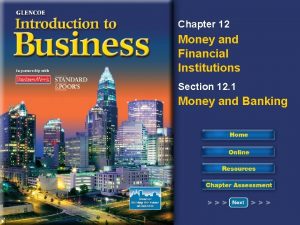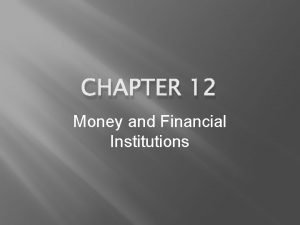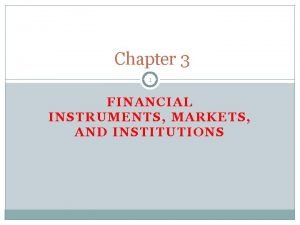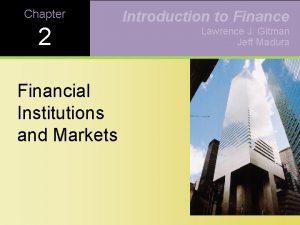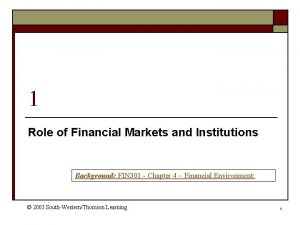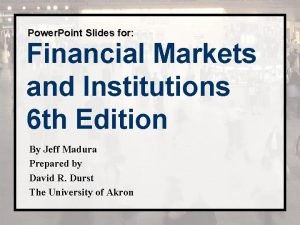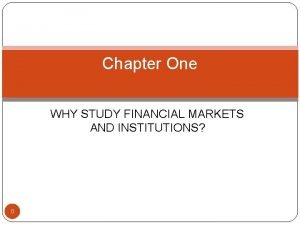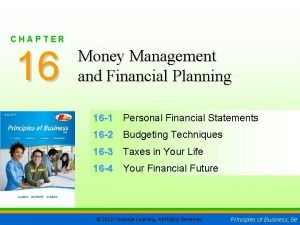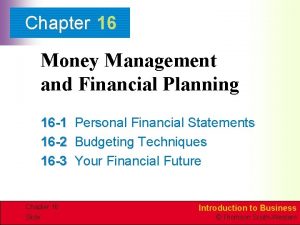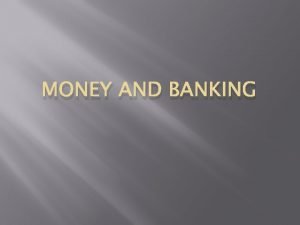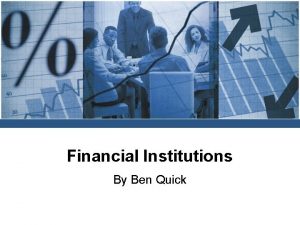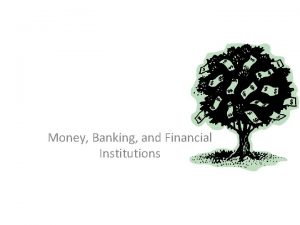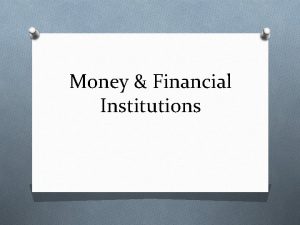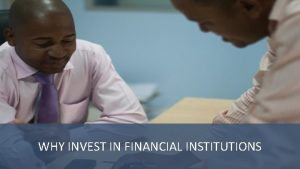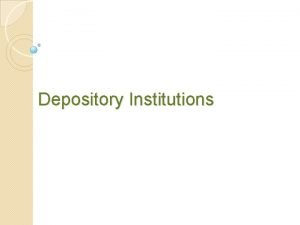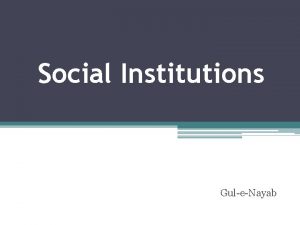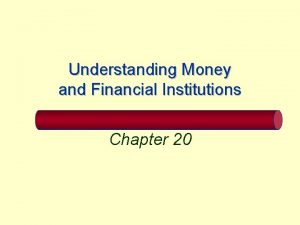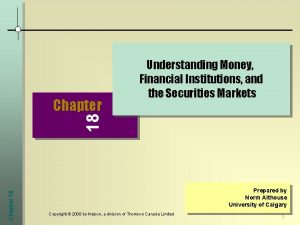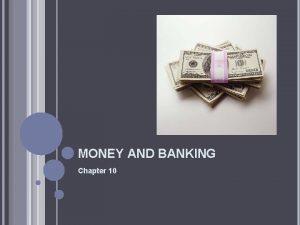Chapter 13 Money And Financial Institutions What is













- Slides: 13

Chapter 13 Money And Financial Institutions

What is Money? Stability Money is anything generally accepted as a medium of exchange, a store of value, and a measure Portability Durability Uniformity Divisibility Recognizability

Different kinds of Money The Money Supply M 1 M 2 M 3 Currency, travelers’ checks, demand deposits (checking accounts), other checkable deposits M 1 plus, small savings deposits, passbook/money market savings deposits, mutual fund money market accounts M 2 plus, institutional money market accounts, large savings deposits, eurodollars, other

What Banks Do • History lesson • Basic function of banks: – Collect funds from those that have no immediate need, pay interest on those funds, funnel them to borrowers • Accepting and holding deposits • Make loans (coordinate lenders and borrowers) • Collecting/transferring funds

Fractional Reserve Banking • How it started • It’s a wonderful life

Let’s make some money • Required reserves – Fixed portion of deposits that cannot be loaned • Reserve ratio – The percentage of reserves a bank is required to keep • Inverse relationship (teeter totter) between reserve ratio and the amount banks can lend

How does this create money? • Some of each deposit is kept (reserve ratio) • The total left is loaned to others – Is the money removed from the vault and given to borrowers? – Bank “creates” money by starting or adding to account • How much money will be created? – Deposit multiplier (100÷reserve ratio)

The FED • The federal reserve system – The nation’s central bank • Entities of the Fed – Federal Reserve Banks (12 districts) – Board of governors (7 members) • Nominated by Pres. Confirmed by Senate • 14 year term, one chairman (Greenspan) – Federal Open Market Committee FOMC • Increase/decrease reserves – Advisory Committees

What does the Fed do? • Issues currency • Processes checks/EFT • Hold reserves for banks – Required reserves (transferred nightly) • Banker to federal Government – Tax payments, treasury department, bonds and securities

Value of money changes • Inflation – A period of rising prices. – Purchasing power of dollar falls. – More money required to purchase same bundle of goods. • Deflation – A time when prices are falling. – Purchasing power of dollar rises. – Less money required to purchase same bundle of goods.

How inflation happens • Demand-pull inflation – Demand for goods/services increases faster than industry’s ability to produce more goods – Consumers bid up the price • Cost-push inflation – Prices rise due to increase in cost of production – Raw materials, wage-price (wages more than productivity), price-wage

Ouch! Inflation hurts • Fixed income – Cost of living goes up, income doesn’t • Savers – ROI must be more than inflation – Same money buys less • Lenders – Interest must be more than inflation – Same money buys less • Businesses – Increases production costs – Increases uncertainty

Inflation Make it hurt so good • Adjustable income – If increases are more than inflation rate • Borrowers – The money they repay is worth less – Interest less than inflation rate • Government – Income tax – Sales tax
 Chapter 12 money and financial institutions
Chapter 12 money and financial institutions Chapter 12 money and financial institutions
Chapter 12 money and financial institutions Dana damian
Dana damian Why study financial market
Why study financial market Participants in money market
Participants in money market Financial markets and institutions ppt
Financial markets and institutions ppt Basic flow of funds through the financial system
Basic flow of funds through the financial system Madura j. financial markets and institutions
Madura j. financial markets and institutions Role of financial markets and institutions
Role of financial markets and institutions Madura j. financial markets and institutions
Madura j. financial markets and institutions Why study financial markets and institutions
Why study financial markets and institutions Chapter 16 money management and financial planning
Chapter 16 money management and financial planning Chapter 16 money management and financial planning
Chapter 16 money management and financial planning Functions of financial institutions
Functions of financial institutions
